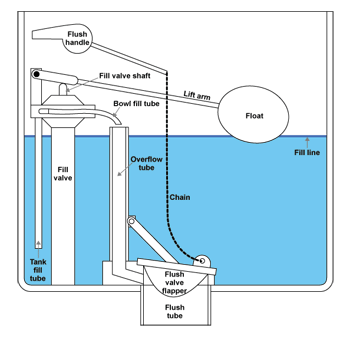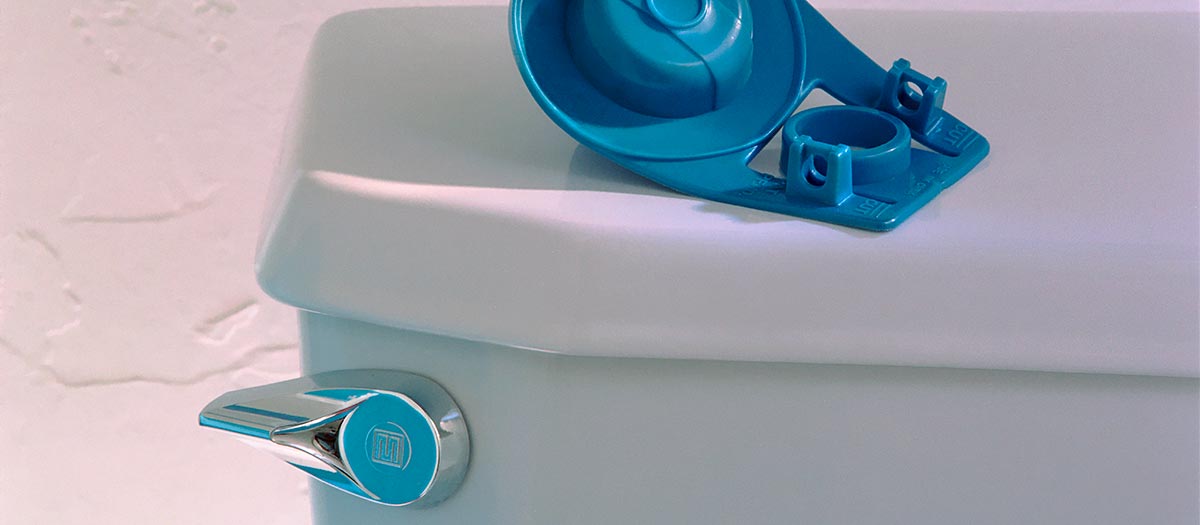Did you know that more than 20 percent of gravity-flush toilets leak? If your toilet runs for a long time or suffers from an occasional "phantom" flush, follow these tips to find and stop the leak.
Note: These tips pertain to traditional gravity-flush toilets and not high-efficiency toilets. If you are not sure about your ability to perform any of these steps, please consider contacting a licensed plumber.
Get to know your toilet tank
Before you can learn how to fix a toilet leak, you need to understand the different components of your toilet tank.

Replacing worn parts
Before replacing worn parts, turn off the water supply valve to the tank. This is usually located on the wall under the toilet. Then, flush the toilet to drain the water.
Be sure to follow all manufacturer instructions for installing the part. If you have trouble, most major plumbing manufacturers have detailed assistance on their websites as well as toll-free telephone numbers to call for assistance.
After installing the parts, turn the water on and test-flush the toilet once or twice. If you replaced the flapper, perform the dye test again to ensure the flapper fits properly. Not all flappers fit properly in all toilets so you may still have a leak.
In some cases, a leaking flapper may be the result of a worn surface on the seat against which the flapper rests. You can try smoothing the seat with steel wool or a scouring pad. If this doesn't correct the problem, you may need to replace the flapper seat and overflow tube assembly.
Periodic refills without flushing/“phantom flush”
Watch this video for step-by-step dye test instructions.
"Ghost" or "phantom" flushing is usually the result of a worn rubber flapper that is allowing water to seep from the tank into the bowl and down the sewer. An improperly adjusted flapper chain also could cause the problem.
Conduct a simple dye test to see if water is seeping from the tank. To do this, request a free Southern Nevada Water Authority Indoor Water Audit and Retrofit Kit, which includes leak detection dye tablets. Or, use food coloring or a powdered drink mix to noticeably color the water in the toilet tank.
Note: If you normally use products that color the water in the tank or bowl such as a sanitizer, remove them and flush the toilet until the water in the bowl and tank are clear before you begin the dye test.
Continuous water trickling
A continuous trickling sound usually means water is running over the top of the overflow tube inside the tank.
Watch this video for step-by-step instructions on resolving continuous trickling.
